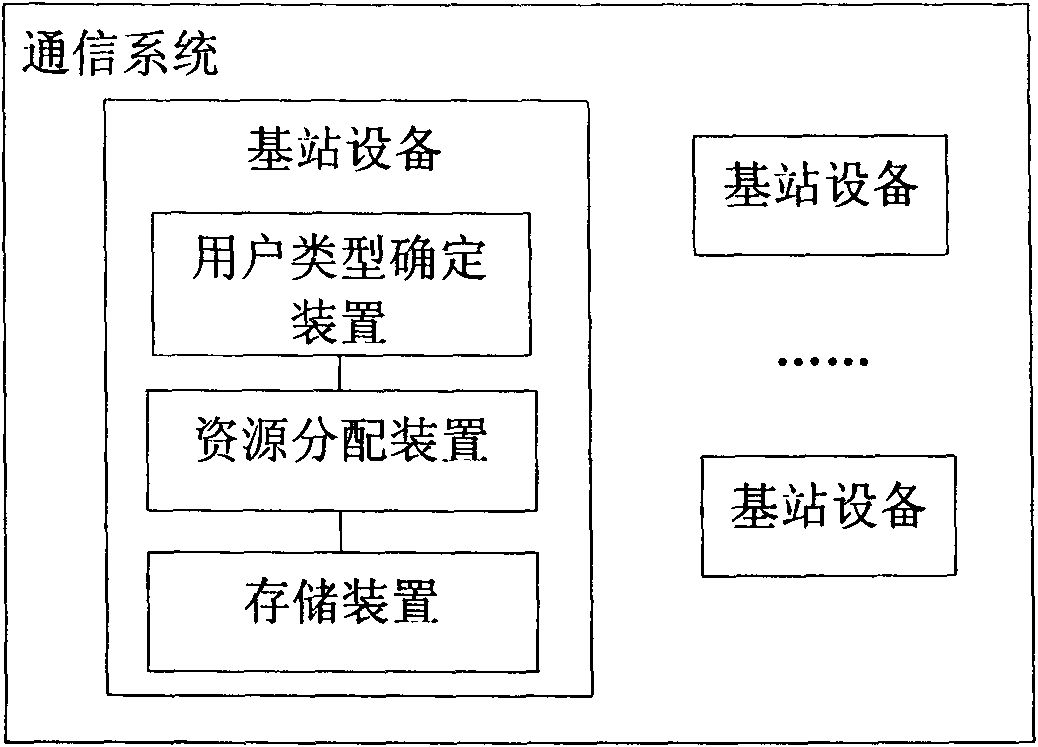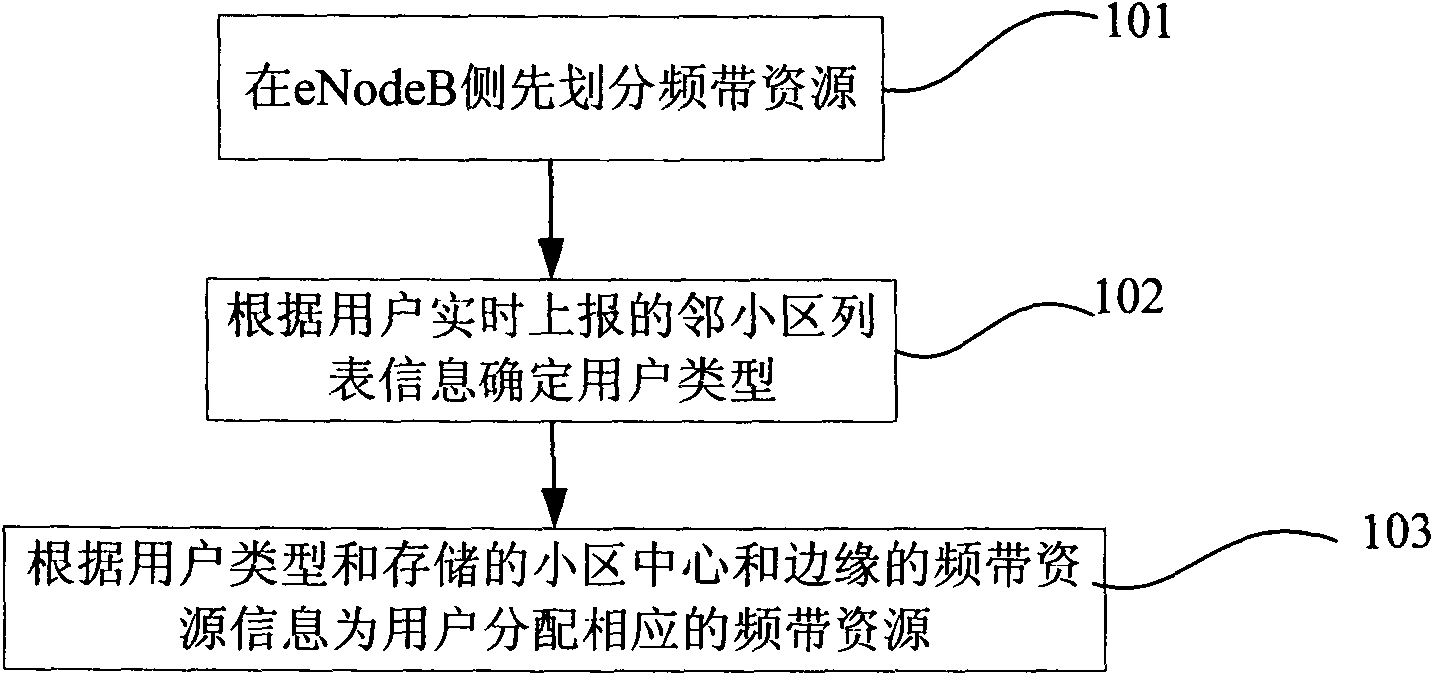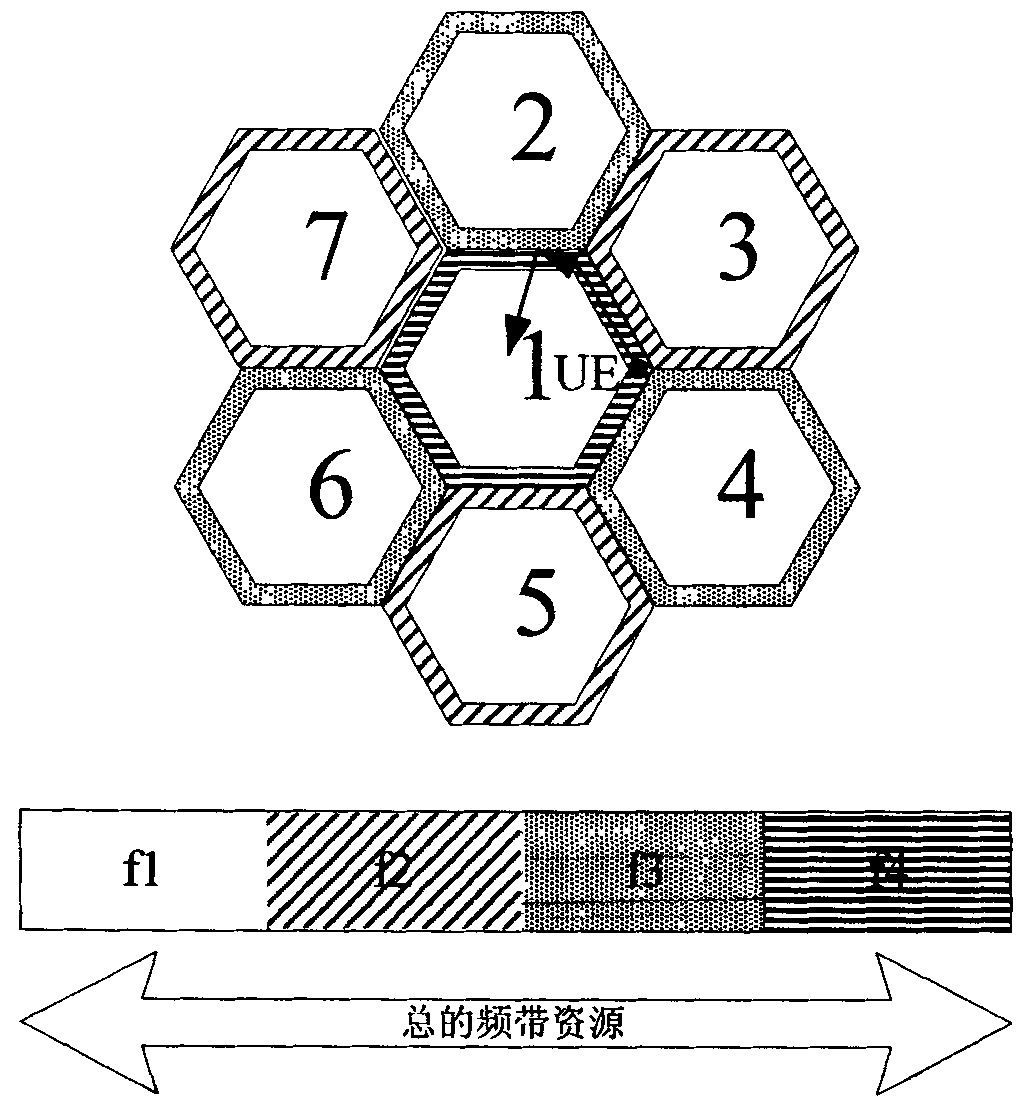Method for coordinating interference among cells, base station equipment and communication system
A technology of inter-cell interference and base station equipment, applied in the field of communication, can solve problems such as serious ICI problems, and achieve the effect of improving performance gain and reducing delay
- Summary
- Abstract
- Description
- Claims
- Application Information
AI Technical Summary
Problems solved by technology
Method used
Image
Examples
Embodiment 1
[0045] Taking a cell with 6 neighboring cells as an example, the implementation of the inter-cell interference coordination method provided by the present invention will be further described in detail below. like image 3 As shown, cell 1 is the serving cell, and cells 2, 3, 4, 5, 6, and 7 are neighboring cells of 1. UE moves from the edge of serving cell 1 to the center of serving cell 1. See the cell topology and UE trajectory image 3 .
[0046] The method for inter-cell interference coordination in Embodiment 1 includes:
[0047] The frequency band resources are allocated on the eNodeB side; when the UE is a CCU, the UE can only use the frequency band resources that can be used by users in the center of the cell during scheduling; if it is a CEU, it can only use the frequency band resources that can be used by users at the edge of the cell during scheduling frequency band resources. for image 3 In the shown cell, all frequency band resources are equally divided into 4...
Embodiment 2
[0069] Taking a cell with only one neighboring cell as an example, the implementation of the inter-cell interference coordination method provided by the present invention will be further described in detail below. like Figure 4 As shown, cell 1 is the serving cell and cell 2 is the neighboring cell of 1. The UE moves from the center of the serving cell 1 to the edge of the serving cell. See the cell topology and UE trajectory Figure 4 .
[0070] The method for inter-cell interference coordination in Embodiment 2 includes:
[0071] The frequency band resources are first allocated on the eNodeB side. for Figure 4 In the shown cell, all frequency band resources are equally divided into three parts (f1, f2, f3), and the centers of cells 1 and 2 use the same frequency band resource, that is, part of frequency band f1. However, edge users in cell 1 can only use frequency band f3, and edge users in cell 2 can only use frequency band resource f2.
[0072] Determine whether the...
Embodiment 3
[0084] The implementation of the inter-cell interference coordination method provided by the present invention will be further described in detail below by taking the case where a serving cell has no neighboring cells as an example. For details on the cell topology and UE trajectory, see Figure 5 .
[0085] The frequency band resources are first allocated on the eNodeB side. for Figure 5 In the shown cell, all the frequency band resources are equally divided into two parts (f1, f2), the center of the cell uses the part of the frequency band f1, and the edge users of the cell can only use the part of the frequency band of the area f2.
[0086] The CCU can use the unused frequency band resources at the edge of the cell; and since the cell has no neighbor cells, the UE in the cell cannot cause interference to other neighbor cells, and the UE can also use the resources allocated to the user CEU at the edge of the cell, that is, Use the entire system bandwidth resource.
[00...
PUM
 Login to View More
Login to View More Abstract
Description
Claims
Application Information
 Login to View More
Login to View More - R&D Engineer
- R&D Manager
- IP Professional
- Industry Leading Data Capabilities
- Powerful AI technology
- Patent DNA Extraction
Browse by: Latest US Patents, China's latest patents, Technical Efficacy Thesaurus, Application Domain, Technology Topic, Popular Technical Reports.
© 2024 PatSnap. All rights reserved.Legal|Privacy policy|Modern Slavery Act Transparency Statement|Sitemap|About US| Contact US: help@patsnap.com










